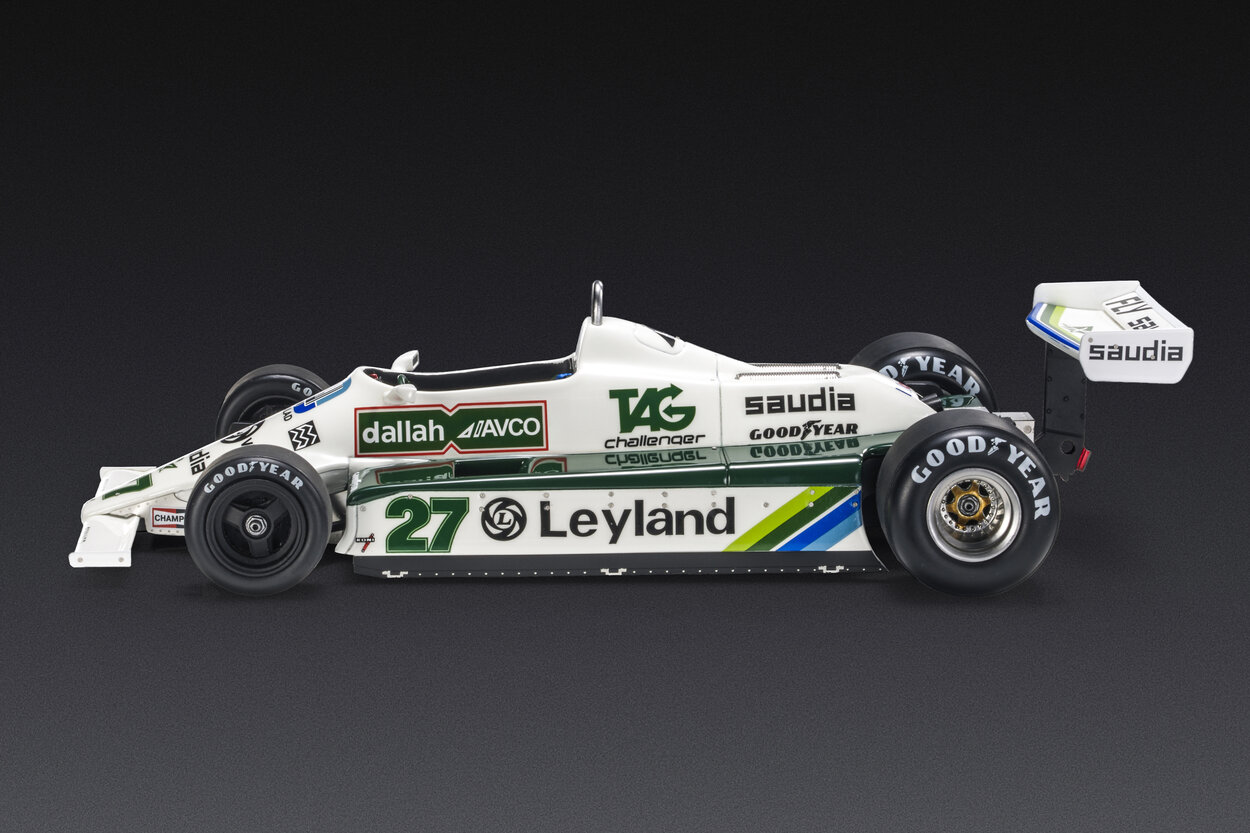Williams FW07B
It’s the first Williams to become world champion, the car that finally crowns the efforts of Frank Williams.
The project is by Patrick Head, a brilliant constructor and Frank’s partner. The concept is the same as the Lotus 79, the wing car that revolutionized Formula 1. Some will accuse Williams of simply copying the car that dominated in 1978, but it’s not that simple. In fact, some will even argue that, despite the idea coming from Chapman, the best example of a ground-effect car is precisely the Williams FW07, for which Patrick Head spent a long time in the wind tunnel at the Imperial College in London.
The Williams FW07 is a compact car, with clean lines and a very rigid chassis. Like most English cars of the time, it’s powered by the 8-cylinder Ford-Cosworth, lightweight, but especially compact and ideal for ground-effect cars because it leaves the side banks free.

Drivers:
Alan Jones: In 1979, the Australian driver takes the FW07 to the top step of the podium on four occasions, all in the latter part of the season. The following year, Jones does even better and achieves five triumphs – Argentina, France, Great Britain, Canada, and the United States East. At the end of the season, he is the new world champion. In 1981, Alan wins the first and last races of the season, respectively with the FW07B and FW07C models.
Carlos Reutemann: Despite a victory at Zolder and seven podium finishes in 1980, his breakthrough season should be the following one, when it is generally thought that a satisfied Alan Jones would give him free rein. However, this does not happen. Despite Reutemann being in excellent form and winning two of the first five races of the 1981 season, with podium finishes in the other three, Jones doesn’t seem willing to stand aside. A fracture is created within the Williams team, damaging both drivers. Despite securing a second consecutive Constructors’ World Championship title, the family feud will benefit Brazilian Nelson Piquet in the Brabham team.
Our model cars:

The FW07 debuts at the 1979 Spanish Grand Prix. At Silverstone in July, Clay Regazzoni gives Frank Williams the team’s first victory. In the remaining races of the season, Patrick Head’s car dominates, especially in the hands of Alan Jones. It’s too late to mount a title challenge. But in 1980, the Williams FW07 and FW07B have no rivals and secure both the Drivers’ and Constructors’ titles.
Modified from time to time, the FW07 will compete in a total of 43 races, winning 15 and securing a second Constructors’ World Championship title in 1981. It will bow out in the spring of 1982.

